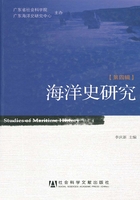
二 结论
上述考古发掘的纺织数据提供了确实的证据,证明史前后期昙石山文化(可能是越)的人群从福建将纺织技术引入到红河谷地。假如红河谷地独立发明了纺纱技术的话,在那里就会发现纺轮的基本原始类型而不是相对发达的双锥纺轮。因为双锥纺轮的惯性高于基本类型,其旋转速度比基本类型更快。它表明,随着稻米的引入,拥有更高技术知识和技能的群体也正在向北部湾地区迁移。数据还显示越南北部、云南、广西等地在两汉时期被纳入到中华帝国以前,其工艺的重要性。[44]像铜鼓一样,纺织品给整个地区的新兴精英提供了使其能与社会不同阶层结合的产品;在早期社会中,社会分化是重要的,出现一个不同群体走向融合,形成较大群体的趋势。控制这些技术和产品的分配,为纺织工人提供了一种途径去改善其社会和经济力量。对考古证据的解读还表明,冶金和纺织技术相结合,推动这些社会按历史学家所关注的轨迹发展,并奠定了以后北部湾地区蓬勃发展的社会经济基础。
Textile Crafts in the Prehistoric Gulf of Tongking:The Intersection Between Archaeology and History
Judith Cameron
During the late prehistoric period,groups with knowledge of rice cultivation,pottery,spinning and weaving as well as maritime technology migrated from South China into various parts of Mainland Southeast Asia(Vietnam,Cambodia,Laos,Thailand),Taiwan and Island Southeast Asia(Philippines).Using certain spindle whorls as cultural markers,this paper traces the gradual movement of these groups from southeast China into the Red River plains of northern Vietnam.This dispersal is significant from an historical perspective as it represents the first Diaspora of Chinese into Southeast Asia.
Key Words:Late Prehistoric Period,Textile Technology,South China,Mainland Southeast Asia
(执行编辑:周鑫)
[1] 作者系澳大利亚国立大学亚太学院研究员,原文为英文;译者杨芹系广东省社会科学院历史研究所、广东海洋史研究中心助理研究员;澳大利亚国立大学南方华裔研究中心教授李塔娜审校。
[2] Charles Higham,The Bronze Age of Southeast Asia,Cambridge:Cambridge University Press,1996.
[3] Wang Gungwu(王赓武),The Nanhai Trade:“A Study of the Early History of Chinese Trade in the South China Sea”,Journal of the Malayan Branch of the Royal Asiatic Society 31,2(1959),pp.3-127.
[4] John Guy,Oriental Trade Ceramics in Southeast Asia:Ninth to Sixteenth Century,Singapore:Singapore University Press,1986,p.5.
[5] 广西壮族自治区博物馆:《广西贵县罗泊湾汉墓》,文物出版社,1988,第25页。
[6] 中国国家博物馆、广西壮族自治区博物馆:《瓯骆遗萃:广西百越文化文物精品集》,中国社会科学出版社,2006。
[7] J.A.Gernet,A History of Chinese Civilization,Cambridge:Cambridge University Press,1966.
[8] 云南省博物馆:《云南晋宁石寨山古墓群发掘报告》,文物出版社,1959。
[9] Judith Cameron,“Textile Technology and Austronesian Dispersals”,in G.R.Clark,A.J.Anderson,and T.Vunidilo ed.The Archaeology of Lapita Dispersal in Oceania,Canberra:Pandanus Press,Australian National University,2001,pp.177-183;Judith Cameron,“Textile Technology in the Prehistory of Southeast Asia”,Ph.D.dissertation,Australian National University,2002;Judith Cameron,“Spindle Whorls”,in C.F.W.Higham and R.Thosarat ed.The Origins of the Civilization of Angkor,vol.1,The Excavation of Ban Lum Khao,Bangkok:Fine Arts Department,2005,pp.211-216.
[10] Charles Higham and Tracey L.-D Lu,“The Origins and Dispersal of Rice Cultivation,”Antiquity 72(1998):pp.867-877.
[11] Higham,Bronze Age of Southeast Asia.
[12] Judith Cameron,“Fibre Preparation During the Proto-Historic Period in Central Vietnam:Technological Continuity at Sa Huynh Sites”,paper presented at Sa Huynh Conference,Quang Ngai Province,Vietnam,pp.22-25,July 2009.
[13] Hoàng Xuân Chinh and Bùi  ,“
,“ hóa
hóa  và các trung tâm
và các trung tâm  hóa trong thò’i
hóa trong thò’i  Kim
Kim  Nam,”
Nam,” (Journal of Archaeology)31(August 1979),pp.40-48;Keith Weller Taylor,The Birth of Vietnam(Berkeley:University of California Press,1983),p.7.
(Journal of Archaeology)31(August 1979),pp.40-48;Keith Weller Taylor,The Birth of Vietnam(Berkeley:University of California Press,1983),p.7.
[14] Léonard Aurousseau,“Le première conquête chinoise des pays annamites,”Bulletin de l’école Française d’Extrême-Orient 23(1923),pp.137-264.
[15] Taylor,Birth of Vietnam,p.314.
[16] Henri Maspero,“Bulletin critique”,T’oung Pao(1924),pp.373-393.
[17] Claude Madrolle,“Le Tonkin ancien”,Bulletin de l’école Française d’Extrême-Orient 37(1937),pp.263-333.
[18] Taylor,Birth of Vietnam,p.314.
[19] Ibid.
[20] Cameron,“Fibre Preparation.”
[21] Hoàng Xuân Chinh and Bùi  ,“
,“ hóa
hóa  ”.
”.
[22] John Tessitore,“View from the East Mountain:An Examination of the Relationship Between the Dongson and Lake Tien Civilizations in the First Millennium b.c.,”Asian Perspectives 28,1(1990),pp.31-65.
[23] 约翰·福尔默观察了云南出土的青铜制品上已矿化的纺织品并称它们为“纺织品标本”,见John E.Vollmer,“Archaeological Evidence for Looms from Yunnan”,in Irene Emery and Patricia Fiskeed.,Looms and Their Products,Washington,D.C.:Textile Museum,1979,pp.78-90。
[24] D.S.Robin Yates,“The Development of Some Early Chinese Weapons”,Needham Research Institute Newsletter 16(February 1998):pp.3-4.
[25] 马承源:《中国古代青铜器》,牛津大学出版社,1986。
[26] Cameron,“Textile Technology in the Prehistory”,p.40.
[27] Ibid,p.90.
[28] Higham,Bronze Age of Southeast Asia,p.136.
[29] 云南省博物馆:《云南晋宁石寨山》。
[30] Rawson,Chinese Bronzes of Yunnan.
[31] Dieter Kuhn,Textile Technology:Spinning and Reeling,part 9 of Science and Civilisation in China,vol.5,Chemistry and Chemical Technology,Cambridge:Cambridge University Press,1988.
[32] Huang Ti and Wang Dadao,“Commentary on the Plates,”in Rawson,Chinese Bronzes of Yunnan,p.220.
[33] Vollmer,“Archaeological Evidence for Looms from Yunnan.”
[34] 云南省博物馆:《云南江川李家山一个古墓的发掘》,《考古学报》1982年第2期。
[35] Vollmer,“Archaeological Evidence for Looms from Yunnan”,pp.78-89.
[36] 云南省博物馆:《云南晋宁石寨山古墓第四次发掘简报》,《考古学报》1963年第9期。浸软是指在纺织纤维之前将其浸泡、清洗的过程。
[37] Judith Cameron,“New Research into Dongson Cloth from Waterlogged Sites in Vietnam”,in I.Glover and L.Bacus ed.,Uncovering Southeast Asia’s Past:Selected Papers from the Tenth Biennial Conference of the European Association of Southeast Asian Archaeologists,The British Museum,London,14th-17th September 2004,Singapore:Singapore University Press,2006,pp.196-203.
[38] Kuhn,Textile Technology:Spinning and Reeling.
[39]  Minh
Minh  ,
, Hoá
Hoá  Sòn(Dongson Culture),Hanoi:Nhà
Sòn(Dongson Culture),Hanoi:Nhà  khoa
khoa  xã
xã  ,2004.
,2004.
[40] Bùi  Liêm,
Liêm, Kim
Kim  ,and
,and  Sòn Ka,Báo Cáo khai
Sòn Ka,Báo Cáo khai  Yên
Yên  Duy Tiên Hà Nam
Duy Tiên Hà Nam  thù’
thù’  (First Report on the Boat Coffin Found in Duy Tiên,Hà Nam Province),Hanoi:Institute of Archaeology,2001.
(First Report on the Boat Coffin Found in Duy Tiên,Hà Nam Province),Hanoi:Institute of Archaeology,2001.
[41] 2004年9月与Matiji Strlic教授的私人交流。
[42] Bui Chi Hoang,“The Phu Chanh Site:Cultural Evolution and Interaction in the Later Prehistory of Southern Vietnam”,Bulletin of the Indo-Pacific Prehistory Association 28(2008),pp.67-72.
[43] Judith Cameron et al.,“Kêt  nghiên cù’u
nghiên cù’u  trong
trong  hoà
hoà  Sòn tai di tich
Sòn tai di tich  Xà(Hùng Yên)trong h
Xà(Hùng Yên)trong h  tác khoa hoc Viêt Nam-Uc
tác khoa hoc Viêt Nam-Uc  thù’ nhât”(Textile in the Dongson Culture Found in the Dong Xa Site(Hung Yen):First Co-operation Between Vietnam and Australia),
thù’ nhât”(Textile in the Dongson Culture Found in the Dong Xa Site(Hung Yen):First Co-operation Between Vietnam and Australia), 2(2009),pp.20-25;Peter Bellwood et al.,“Ancient Boats,Boat Timbers,and Locked Mortise-and-Tenon Joints from Bronze/Iron-Age Northern Vietnam”,International Journal of Maritime Archaeology 36.1(2007),pp.2-20.用碳十四标示公元前通常使用“b.c.”而非“b.c.e.”。
2(2009),pp.20-25;Peter Bellwood et al.,“Ancient Boats,Boat Timbers,and Locked Mortise-and-Tenon Joints from Bronze/Iron-Age Northern Vietnam”,International Journal of Maritime Archaeology 36.1(2007),pp.2-20.用碳十四标示公元前通常使用“b.c.”而非“b.c.e.”。
[44] 这一时期的历史疆界可参Albert Herrmann,An Historical Atlas of China,Chicago:Aldine,1966,pp.14-15。